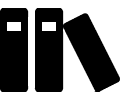Effective strategy generation and execution require an effective organization. But what is an effective organization, and how do you know whether it is in shape?
The first thing to do, is to define what we mean by the very term "organization" and what an organization consists of. In part 2 of my book,
The Strategy Handbook, , I created the Organizational Map for this. It is a structured framework containing the ten key elements of what constitutes an organization. With this framework you can create a good understanding of what an organization is and to which elements you need to pay attention to when executing a strategy or making organizational changes.
As the Organizational Map consists of no less then ten elements, it is immediately clear that making organizational changes is not easy. And if we look at the kind of elements included—leadership, structure, processes, commitment, etc.—we can also immediately see that making changes can have a profound effect on the organization as a whole and people’s lives inside it. After all, when making changes to the organization, we touch the core of people’s roles, relationships and positions and the kind of work they do.
To make a jumpstart with improving your organization,I have created a very short quickscan that you can use to assess whether your organization is in shape. This quickscan helps you get an overall idea of the quality of your organization. Furthermore, it also helps you identify where are its weakest points—and thus, where to start with making improvements. It consists of just ten questions which you can answer with yes, maybe or no. Every ‘maybe’ or ‘no’ is an indicator that your organization is not as much in shape as you may want it to be. Here are the questions.
- Leadership. Does the organization have the right leaders in the right place?
- Controls. Are there effective control mechanisms for steering progress and performance in line with the strategy?
- Motivation. Are people sufficiently motivated to do their job?
- Commitment. Do people look sufficiently beyond their job and contribute to the rest of the organization?
- Expertise. Do people have the right knowledge, skills and experience to do what is needed?
- Information technology. Is the information technology that is used effective, up to date, connected, and complete?
- Structure. Are roles, responsibilities, and power clear and divided in an effective manner?
- Communication. Is there enough and effective communication within the organization and with the outside world?
- Processes. Are the processes in the organization clear, effective, and followed by people?
- Policies. Are the organization’s policies effectively guiding and supporting the work that should be done?
After having done the quickscan you can then zoom in on those elements and dig deeper to find the kind of improvements needed and define actions that will help you make a step forward.








